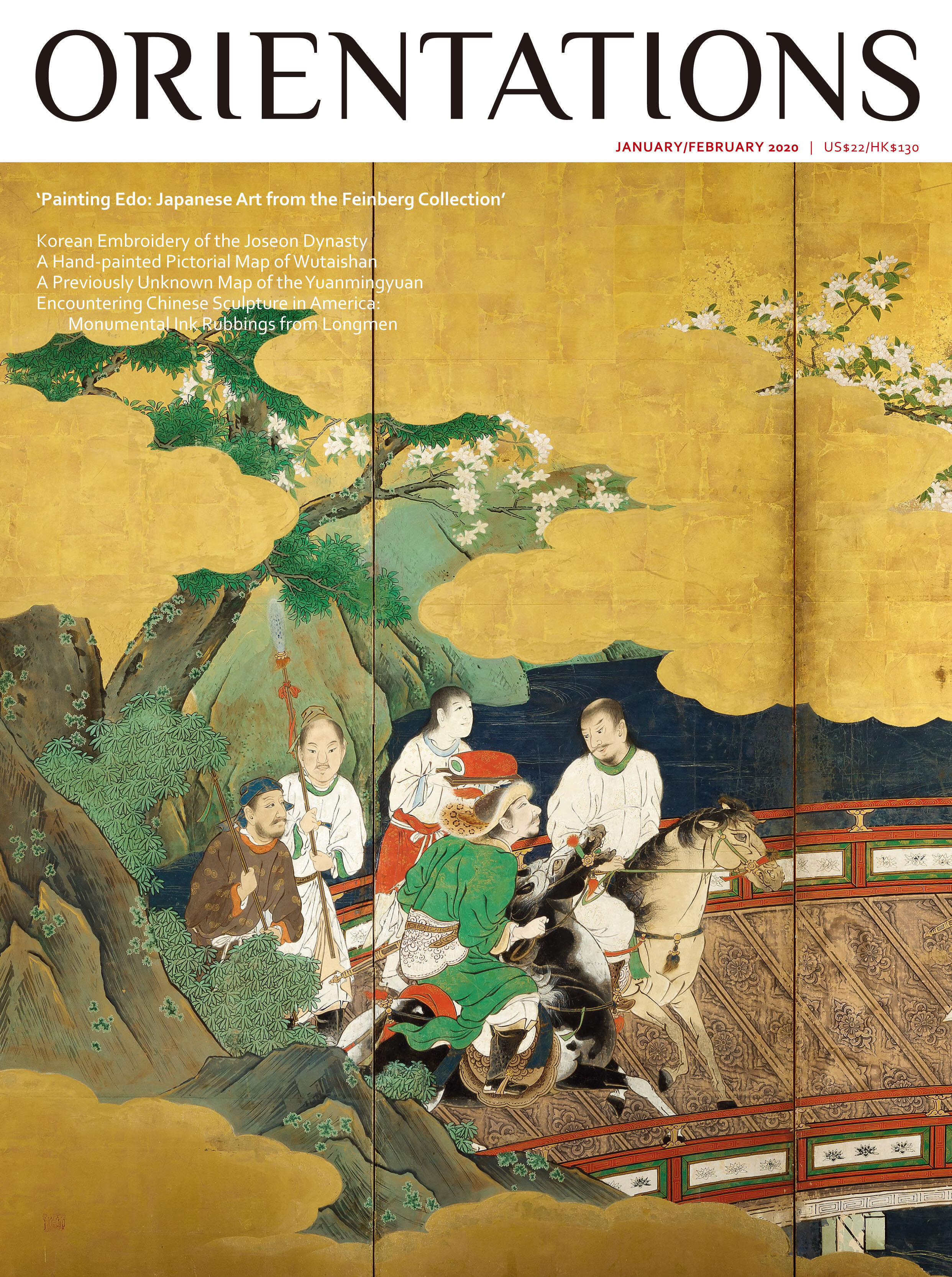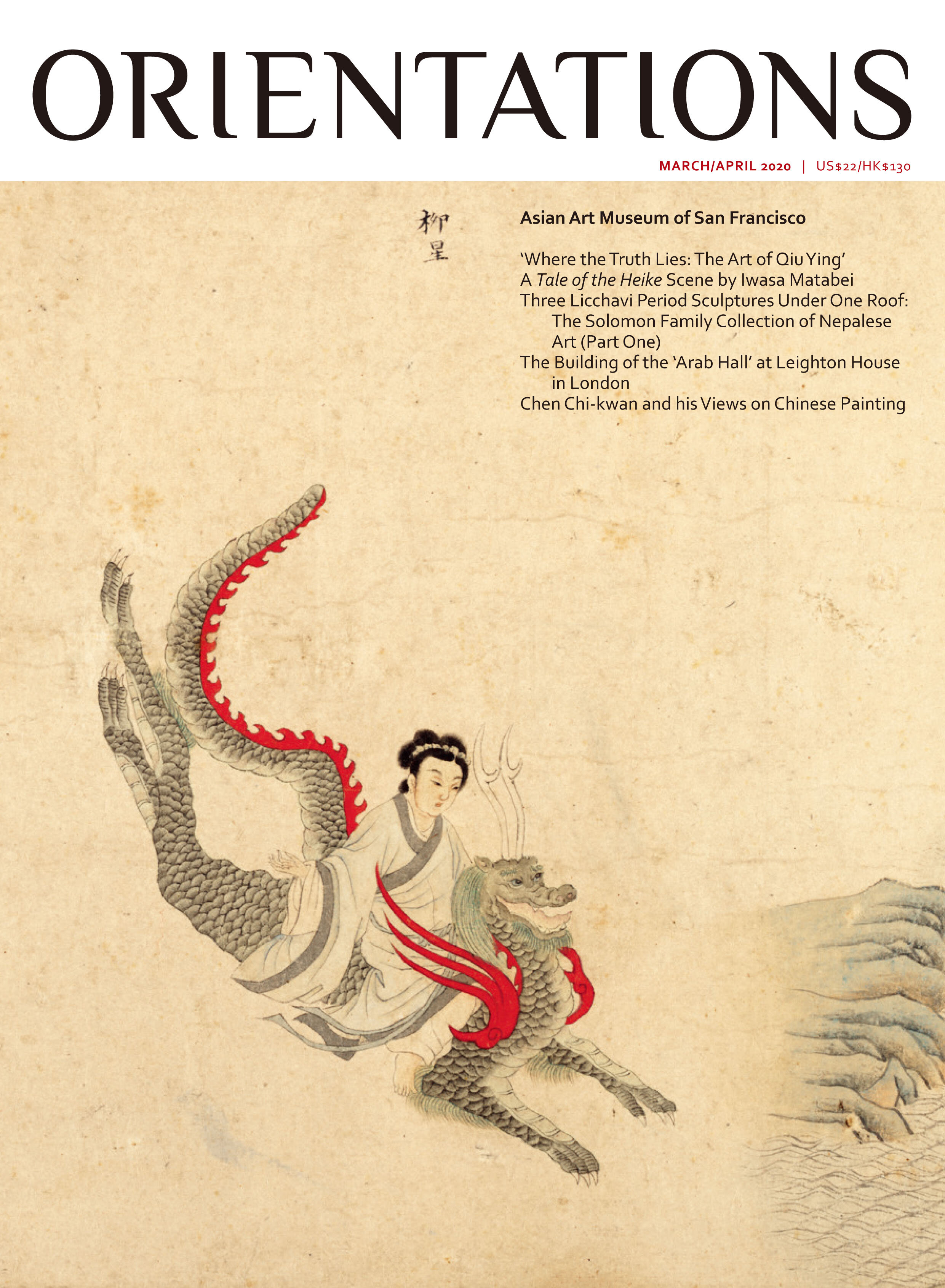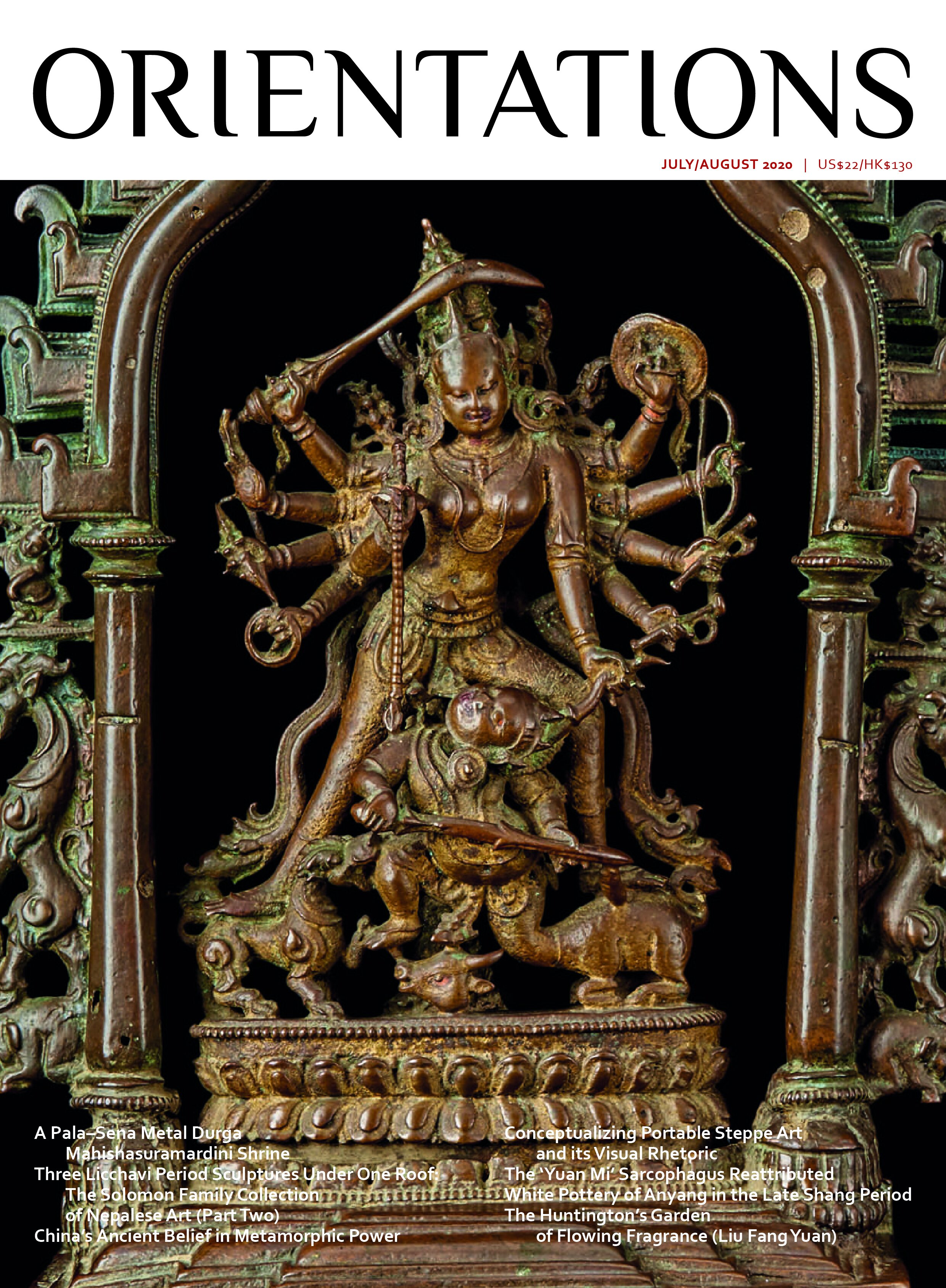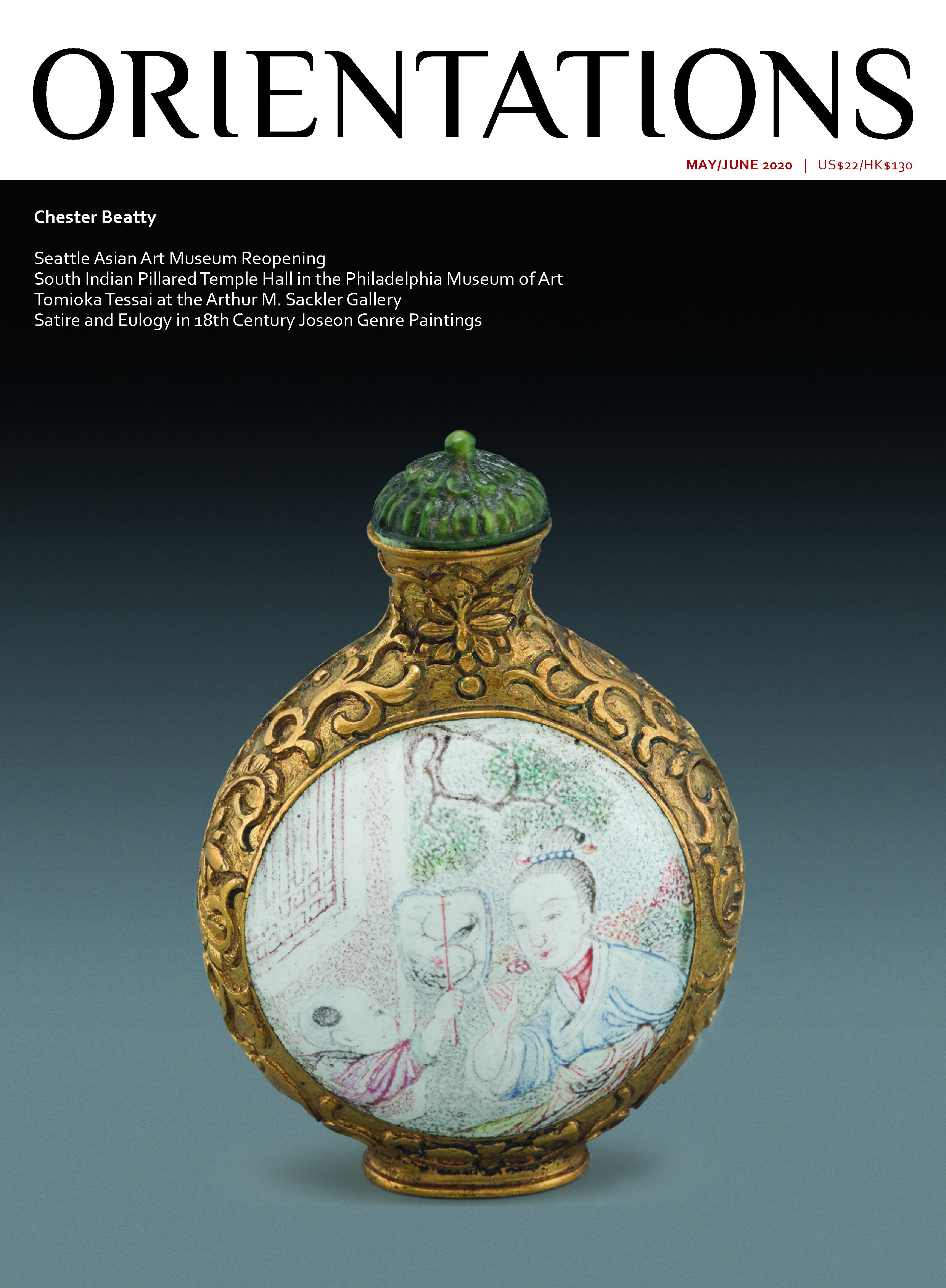 Image 1 of 1
Image 1 of 1


SEP-OCT 2020
VOLUME 51 - NUMBER 5
With worldwide travel still heavily restricted, we are obliged to contemplate art from a distance and to find new ways of fulfilling our wanderlust. Over the course of 51 years in print, we have returned time and time again to the same collections or artworks in order to encourage discussion and differing views. Luxuriant Groves and Distant Peaks is one of the several titles by which a large landscape painting has been known since it was acquired by Charles Lang Freer (1854–1919) in 1916. Attributed over time to an obscure Tang dynasty (618–907) painter named Li Shan and to the Jin dynasty (1115–1234) painter Li Shan (act. 1201–8 at the Jin court), the hanging scroll eventually took on its present identity as the work of a follower or associate of Li Shan active sometime in the 13th century. However, the presence of a large seal of the artist Mi Fu (1051–1107) and questions regarding its authenticity have inspired new research into the painting’s attribution.
We travel to the Alchi Sumtsek (Three-Storeyed Temple) in Ladakh, India, and to the Tabo Main Temple in Spiti, in the Indian state of Himachal Pradesh, with Christian Luczanits, who presents new material in support of the early 13th century date of the former and the chronology of the latter. His revisitation of early western Himalayan art relies primarily on an evaluation of the religious changes reflected in the monuments’ decoration. Eric Huntington takes us to Samye Monastery in the Tibet Autonomous Region, whose ground plan recreates the Buddhist cosmos locally, interwoven with other mandalic geographies, and to Trongsa dzong in Bhutan. Within each of the various traditions of representing the cosmos, there exist depictions in painting, sculpture, architecture, ritual and text.
The meeting of different cultures inevitably brings innovation and fresh approaches. Thangkas appeared in Europe first after the British invasion of Tibet in 1903–4 by Lt Colonel Sir Francis Younghusband (1863–1942) and then later during expeditions between 1926 and 1948 by the Italian Tibetologist and explorer Professor Giuseppe Tucci (1894–1984). The third of our articles on Himalayan art looks at how thangkas and thangka fragments are displayed in their new, Western, home.
Art has been used throughout time to project power and legitimacy; a category of miniature paintings produced in the context of artistic and cultural exchange between the Mughals (1526–1707) and other political powers in Asia and the West employs pictorial representation to legitimize political authority and dynastic power, while also adopting iconography from Western visual culture.
The Inebriated Monk was painted by Fu Baoshi (1904–65) in China’s wartime capital of Chongqing under siege of terror bombing by the Japanese air force. It depicts the ‘Cursive Script Sage’ Huaisu seated cross-legged beneath an arched canopy of pines, while a visitor and his attendant stand by, transfixed by the larger-than-life figure before them. The dry and ferocious brushwork is different to that of any of his other paintings. As we rely on Fu’s works to help us understand the turmoil of that era, we look to art and artists today to guide us through the present time.
FEATURES
Richard M. Barnhart. An Early Landscape Painting from the Collection of Mi Fu
Lisa Claypool. Fu Baoshi’s Sympathetic Ink
Christian Luczanits. From Tabo to Alchi: Revisiting Early Western Himalayan Art
Eric Huntington. Layered Cosmologies in Himalayan Buddhist Shrines
Anne Bancroft. Hanging Sacred Cloth: The Practice of Displaying Thangkas
Rui Oliveira Lopes. Artistic Eclecticism in Mughal Miniature Painting from 1526 to 1707
Andreas Marks. The Abstract Prints of Hagiwara Hideo
REVIEWS
Tiffany Wai-Ying Beres. Hsiao Chin and Punto: Mapping Post-War Avant-Garde by Joshua Gong | Beyond the Stage of Time: The Master of the Water, Pine and Stone Retreat
INTERVIEWS
‘We Do Not Dream Alone’: An Interview with Boon Hui Tan
TRIBUTES
Amy Sanders Clague (1932–2020)
CURATOR’S CHOICE
Willow Weilan Hai. The Eternal ‘Seven Sages of the Bamboo Grove’
VOLUME 51 - NUMBER 5
With worldwide travel still heavily restricted, we are obliged to contemplate art from a distance and to find new ways of fulfilling our wanderlust. Over the course of 51 years in print, we have returned time and time again to the same collections or artworks in order to encourage discussion and differing views. Luxuriant Groves and Distant Peaks is one of the several titles by which a large landscape painting has been known since it was acquired by Charles Lang Freer (1854–1919) in 1916. Attributed over time to an obscure Tang dynasty (618–907) painter named Li Shan and to the Jin dynasty (1115–1234) painter Li Shan (act. 1201–8 at the Jin court), the hanging scroll eventually took on its present identity as the work of a follower or associate of Li Shan active sometime in the 13th century. However, the presence of a large seal of the artist Mi Fu (1051–1107) and questions regarding its authenticity have inspired new research into the painting’s attribution.
We travel to the Alchi Sumtsek (Three-Storeyed Temple) in Ladakh, India, and to the Tabo Main Temple in Spiti, in the Indian state of Himachal Pradesh, with Christian Luczanits, who presents new material in support of the early 13th century date of the former and the chronology of the latter. His revisitation of early western Himalayan art relies primarily on an evaluation of the religious changes reflected in the monuments’ decoration. Eric Huntington takes us to Samye Monastery in the Tibet Autonomous Region, whose ground plan recreates the Buddhist cosmos locally, interwoven with other mandalic geographies, and to Trongsa dzong in Bhutan. Within each of the various traditions of representing the cosmos, there exist depictions in painting, sculpture, architecture, ritual and text.
The meeting of different cultures inevitably brings innovation and fresh approaches. Thangkas appeared in Europe first after the British invasion of Tibet in 1903–4 by Lt Colonel Sir Francis Younghusband (1863–1942) and then later during expeditions between 1926 and 1948 by the Italian Tibetologist and explorer Professor Giuseppe Tucci (1894–1984). The third of our articles on Himalayan art looks at how thangkas and thangka fragments are displayed in their new, Western, home.
Art has been used throughout time to project power and legitimacy; a category of miniature paintings produced in the context of artistic and cultural exchange between the Mughals (1526–1707) and other political powers in Asia and the West employs pictorial representation to legitimize political authority and dynastic power, while also adopting iconography from Western visual culture.
The Inebriated Monk was painted by Fu Baoshi (1904–65) in China’s wartime capital of Chongqing under siege of terror bombing by the Japanese air force. It depicts the ‘Cursive Script Sage’ Huaisu seated cross-legged beneath an arched canopy of pines, while a visitor and his attendant stand by, transfixed by the larger-than-life figure before them. The dry and ferocious brushwork is different to that of any of his other paintings. As we rely on Fu’s works to help us understand the turmoil of that era, we look to art and artists today to guide us through the present time.
FEATURES
Richard M. Barnhart. An Early Landscape Painting from the Collection of Mi Fu
Lisa Claypool. Fu Baoshi’s Sympathetic Ink
Christian Luczanits. From Tabo to Alchi: Revisiting Early Western Himalayan Art
Eric Huntington. Layered Cosmologies in Himalayan Buddhist Shrines
Anne Bancroft. Hanging Sacred Cloth: The Practice of Displaying Thangkas
Rui Oliveira Lopes. Artistic Eclecticism in Mughal Miniature Painting from 1526 to 1707
Andreas Marks. The Abstract Prints of Hagiwara Hideo
REVIEWS
Tiffany Wai-Ying Beres. Hsiao Chin and Punto: Mapping Post-War Avant-Garde by Joshua Gong | Beyond the Stage of Time: The Master of the Water, Pine and Stone Retreat
INTERVIEWS
‘We Do Not Dream Alone’: An Interview with Boon Hui Tan
TRIBUTES
Amy Sanders Clague (1932–2020)
CURATOR’S CHOICE
Willow Weilan Hai. The Eternal ‘Seven Sages of the Bamboo Grove’





